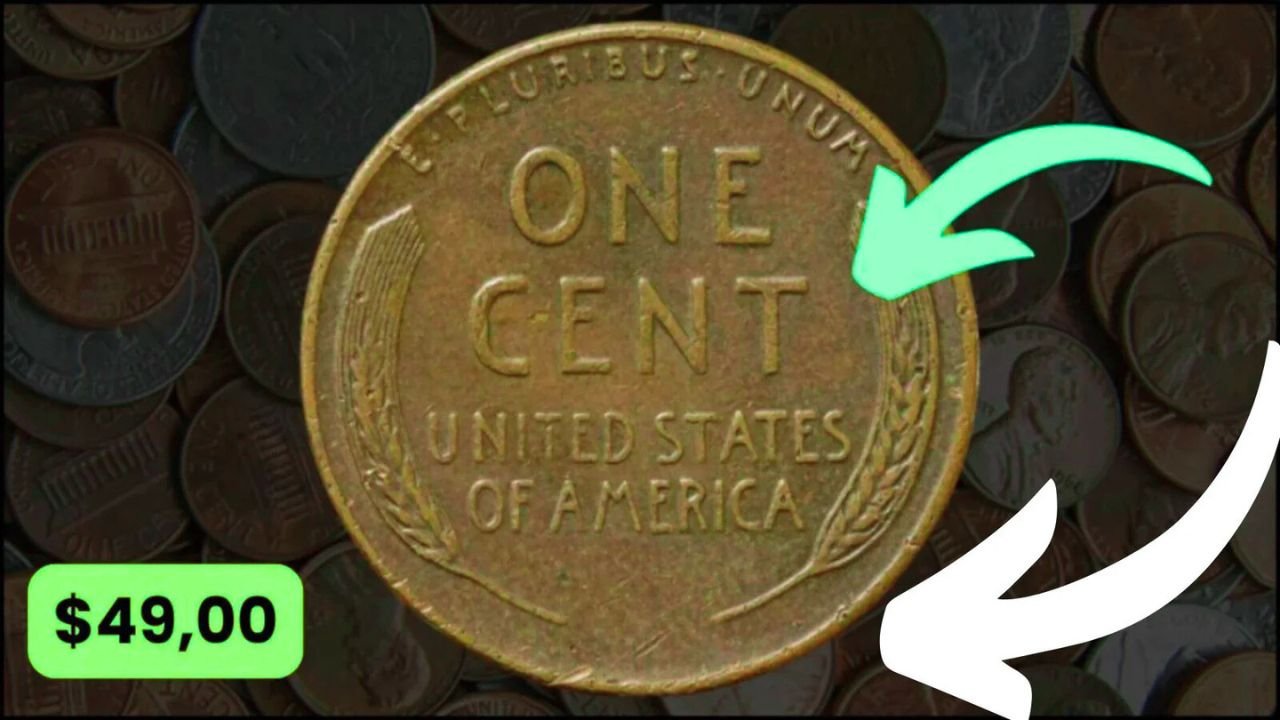Could a penny in your pocket be worth thousands? Believe it or not, some Lincoln Wheat Pennies are valued at up to $49,000 or more — and a few might still be floating around in circulation. Let’s uncover what makes this historic coin so special, how to spot a valuable one, and where you might find it.
What Is the Lincoln Wheat Penny?
The Lincoln Wheat Penny, officially the Lincoln Cent, was minted by the U.S. Mint from 1909 to 1958. It features President Abraham Lincoln on the front (obverse) and two wheat stalks on the back (reverse), which inspired the nickname “Wheat Penny.”
- Designer: Victor David Brenner
- First issued: 1909 (Lincoln’s 100th birthday)
- Replaced by: The Lincoln Memorial design in 1959
Collectors love this coin for its historical significance and rare varieties — some of which can sell for staggering prices.
Why Are Some Wheat Pennies Worth Thousands?
The value of a Lincoln Wheat Penny depends on several factors:
- Rarity: Some years had very low mintages.
- Minting errors: Coins with striking mistakes are highly prized.
- Condition: The better the condition, the higher the value.
A few rare pennies have sold for tens of thousands of dollars at auction — including the legendary 1909-S VDB, worth up to $49,000 in top condition.
Most Valuable Lincoln Wheat Pennies
| Year | Mint Mark | Reason for Value | Estimated Value |
|---|---|---|---|
| 1909-S VDB | S | Rare initials and low mintage | Up to $49,000+ |
| 1914-D | D | Scarce Denver issue | Up to $10,000+ |
| 1922 No D | — | Missing mint mark error | Up to $15,000+ |
| 1931-S | S | Low production year | Up to $5,000+ |
| 1955 Doubled Die | — | Double-image mint error | Up to $25,000+ |
Tip: The “S” mint mark stands for San Francisco, “D” for Denver, and no mint mark means Philadelphia.
Can You Still Find Lincoln Wheat Pennies in Circulation?
Yes — but it’s rare. Most Wheat Pennies were pulled from circulation decades ago, yet a few still show up occasionally in pocket change or bank rolls, especially those from the 1940s – 1950s.
Where to Look
- Your spare change: Always check older coins.
- Bank coin rolls: Ask for penny rolls to search through.
- Estate sales & flea markets: Hidden coin collections are common.
- Old jars or boxes: Family keepsakes often hold treasures.
Finding a high-value coin like a 1909-S VDB is unlikely — but not impossible.
How to Spot a Valuable Wheat Penny
When checking your pennies, pay attention to:
- Date and mint mark: Key years include 1909, 1914, and 1955.
- Condition: Unworn coins (graded “Mint State”) are worth more.
- Errors: Doubling, missing letters, or off-center strikes add value.
Professional grading services like PCGS or NGC can certify authenticity and significantly boost your coin’s market value.
Fun Facts About the Lincoln Wheat Penny
- The 1909-S VDB design was controversial because Brenner’s initials were too large.
- During World War II, the Mint used steel instead of copper in 1943 — a few rare copper 1943 pennies exist and can be worth over $100,000!
- It was the first U.S. coin to feature a real person.
FAQs
Q1: What is the rarest Lincoln Wheat Penny?
The 1909-S VDB is considered the rarest and most valuable regular-issue Wheat Penny.
Q2: How can I tell if my penny is valuable?
Check the date, mint mark, and condition. Look for errors or doubling in the lettering.
Q3: Are Wheat Pennies made of copper?
Yes — most are 95% copper, except for the 1943 steel cent made during WWII.
Q4: Where can I sell rare Wheat Pennies?
Try coin dealers, auctions, or reputable online marketplaces like eBay or Heritage Auctions.
Q5: Should I clean old coins before selling them?
Never clean coins — it can damage the surface and reduce their value dramatically.
Conclusion: Check Your Change — You Might Be Rich!
The Lincoln Wheat Penny isn’t just a piece of copper; it’s a slice of American history that could be worth a fortune. While most are common, the thrill of finding a rare $49,000 penny keeps collectors searching.
So next time you get a handful of change, take a closer look — your next penny might be worth more than you ever imagined!




